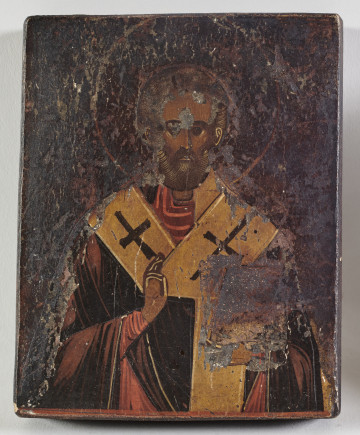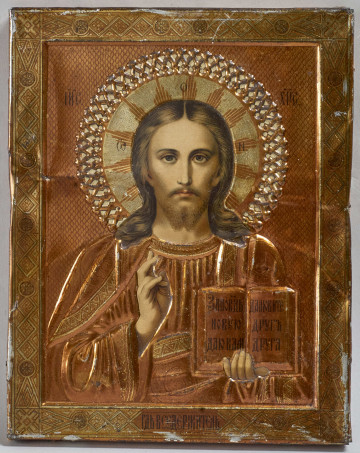
Saint Nicholas the Wonderworker
4. ćwierć XIX wieku
Castle Museum in Łańcut
Part of the collection: Ikony
Following the conciliar canons, in the art of the Eastern Church, God was depicted solely in the person of Christ—the Incarnate Word, consubstantial with God the Father. Some of the oldest representations of the Saviour are paintings depicting Christ's Omnipotence and Divine Nature, referred to as the Ruler of All, or in Greek, Pantocrator. Starting in the 4th-6th centuries, the Saviour was depicted as the Ruler of the Universe, modelled after earthly rulers with all the symbols of imperial dignity. The figure of Christ, always portrayed frontally, was placed in the dome of churches, symbolising heaven. Over time, the image of the Pantocrator took the central position in Deesis representations, alongside figures of the Mother of God and John the Baptist, who revere the enthroned Saviour and intercede on behalf of the human race. The image of Christ as Pantocrator also appears in the Sovereign tier of an iconostasis. Christ the Almighty is shown either standing in full figure or seated on a throne, and in later iconography, he is more often depicted in bust form. The fingers of Christ's right hand, raised to chest level, are typically arranged in the shape of the monogram IC XC, symbolising Christ’s name. A scroll or open book in the Saviour's left hand signifies his teaching mission. Depictions of Christ as Pantocrator are also frequent in domestic icons used for private worship.
Teresa Bagińska-Żurawska https://orcid.org/0000-0002-9243-3967
Author / creator
Object type
painting
Technique
tempera, złocenie
Material
deska, distemper, gold
Creation time / dating
Creation / finding place
Owner
Muzeum - Zamek w Łańcucie
Identification number
Location / status

4. ćwierć XIX wieku
Castle Museum in Łańcut

XIX/XX wiek
Castle Museum in Łańcut

20th century
Castle Museum in Łańcut
DISCOVER this TOPIC
Museum of King Jan III's Palace at Wilanów
DISCOVER this PATH
Educational path